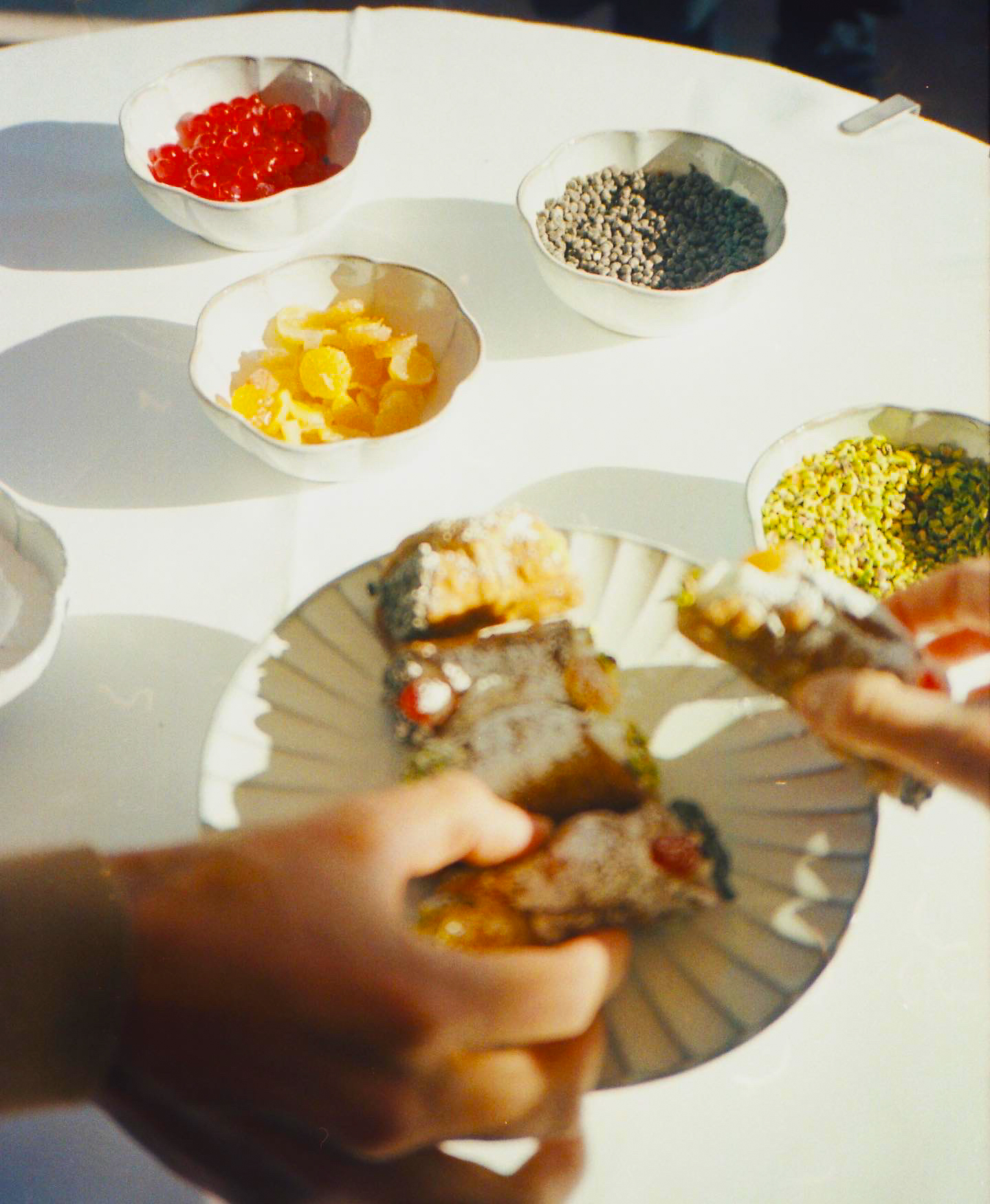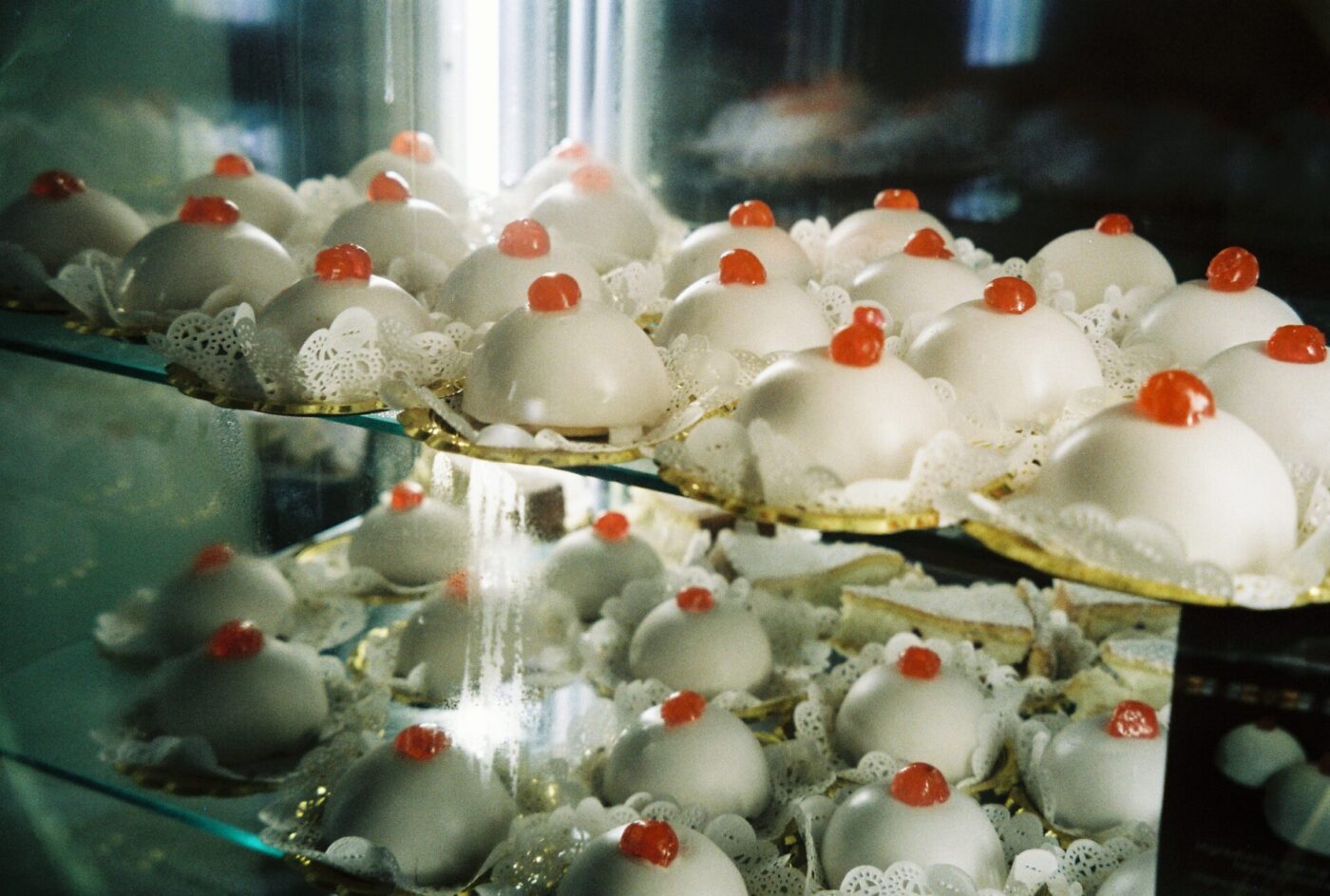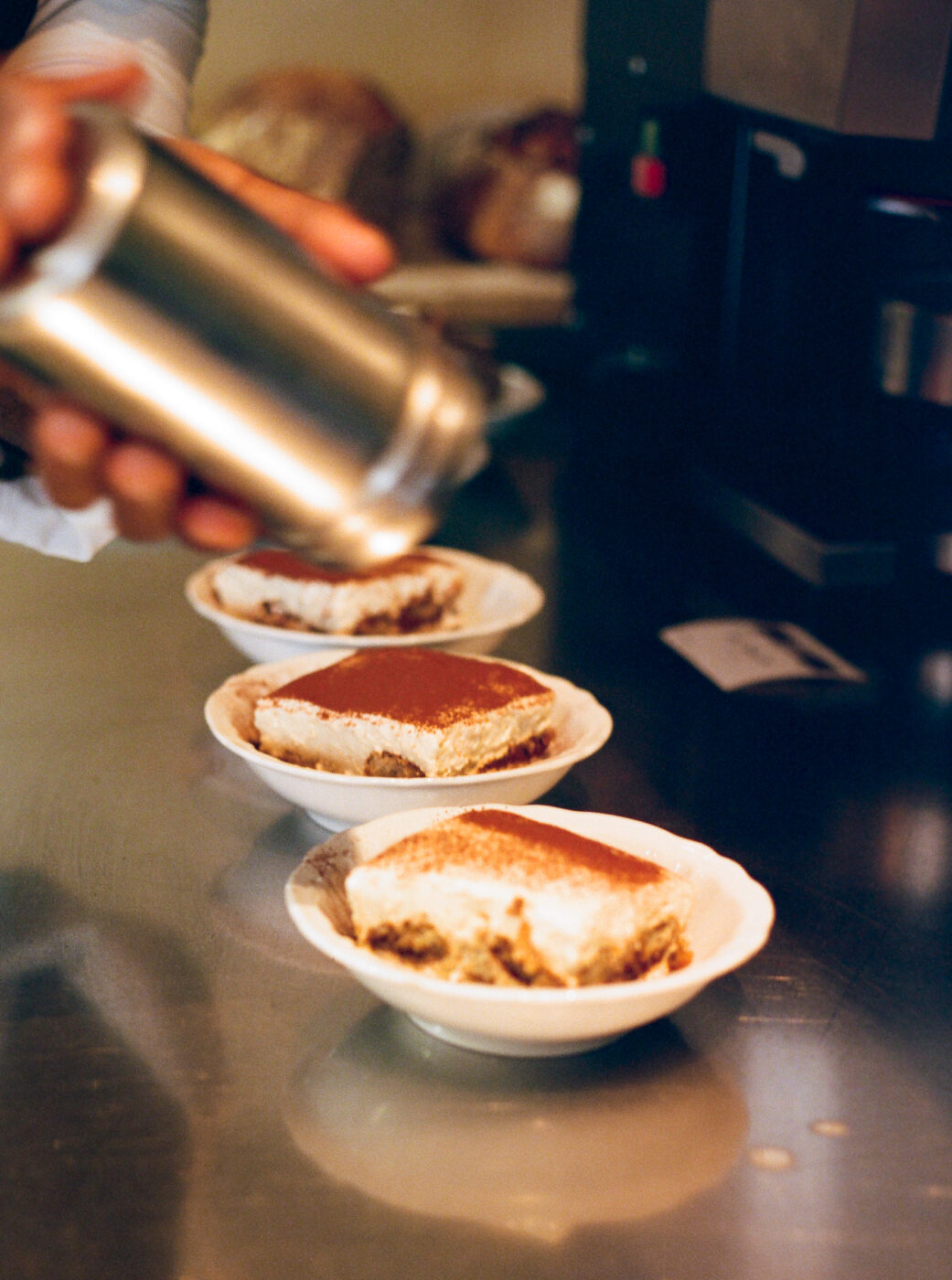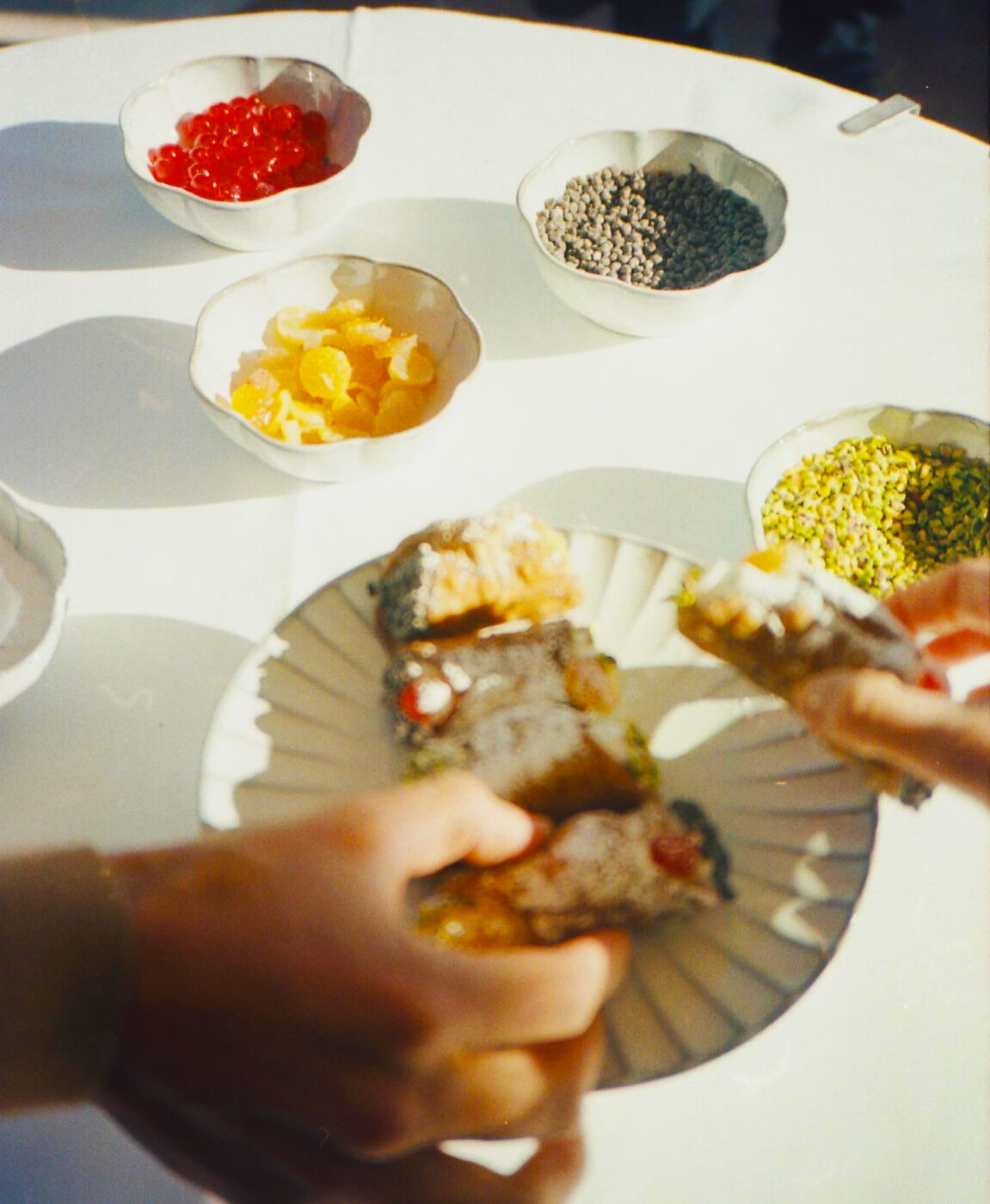You wouldn’t be the first to look at a cannoli and think “Doesn’t that sorta look like…?” And you wouldn’t be wrong to think so.
Popular legend traces the pastry’s origins to Arab-ruled Sicily around 1000 AD, in the city of Caltanissetta, where women in a harem are said to have invented the treat—a fried, tubular shell filled with sweet ricotta—to celebrate their emir’s, ahem, endowments. After the Norman conquest, the story goes, nuns inherited the recipe; some historians even suggest the concubines became nuns themselves, drawn to the familiar rhythms of communal living. Either way, the cannolo became a fixture of convent kitchens and eventually of Carnival—the pre-Lenten festival rooted in ancient Bacchic rites, when rules were relaxed and appetites (of more than one kind) let loose. During the festivities, men would gift cannoli to prospective lovers with the mantra, “Ogni cannolu è scettru d’ogni Re… lu cannolu è la virga di Mosè” (“Every cannolo is the sceptre of every king… the cannolo is the penis of Moses.”) Subtle, it was not.
But these deep-fried innuendos were, and are, just one member of a family of desserts that leave little to the imagination, taking inspiration from the human body—breasts, buttocks, and everything in between.
There are the infamous Minne di Sant’Agata (Saint Agatha’s Breasts) from Catania, Sicily—dome-shaped sponge cakes filled with sheep’s ricotta, candied fruit, and dark chocolate, glazed in glisteningly white icing and topped with a maraschino cherry. They’re meant to resemble the severed breasts of Saint Agatha, a third-century virgin martyr who, after refusing the advances of a Roman prefect, was imprisoned in a brothel and later had her breasts cut off. Legend has it her wounds were healed by Saint Peter, but she was eventually burned alive, wrapped only in her red veil. A year later, Mount Etna erupted, and the people of Catania marched through the streets with that same veil, miraculously stopping the lava flow. Each February, hundreds of thousands of pilgrims gather to commemorate her and feast on her sugar-rendered body parts.
From Puglia come the Tette delle Monache (Nuns’ Breasts), also known as Sospiri Pugliesi—“sighs,” or perhaps more pointedly, “moans.” These are pillowy sponge cakes filled with chantilly cream, each shaped like a single, supple mound with a gently peaked top. Their name and form nod to the cloth padding Poor Clare nuns supposedly tucked between their breasts to flatten their figures beneath the habit.
Their cousins in Abruzzo are the Sise delle Monache of Guardiagrele—essentially the same soft sponge cakes as their Puglian counterparts, but filled with custard and clustered in threes. (This ménage à trois is also known as Tre Monti, or Three Mountains, for the area’s three iconic mountain massifs: Gran Sasso, Maiella, and Sirente-Velino—the highest of the Apennine chain.)
And then there’s the harder-to-find Fedde del Cancelliere, or “the Chancellor’s Buttocks”—two rounded almond paste shells filled with blancmange and apricot jam, pressed together in ceramic molds to resemble a pair of plump cheeks. The dessert was originally crafted by the nuns of a monastery in Palermo, founded in 1171 by Matteo d’Ajello, the Grand Chancellor of Sicily under Norman rule. Some say the sweet refers directly to d’Ajello himself—known for his fondness for feasting and for having developed a rather notable derrière. Others believe the nuns invented it as a symbol of abundance and fertility, gifting the sweet to young couples before marriage as a kind of edible blessing. Some scholars even trace its lineage to an earlier, now-quasi-extinct cookie from Comiso (in the province of Ragusa) shaped like female genitalia, once given by brides to grooms as a good luck charm.
You may be picking up on a recurring theme: practically all of these desserts were created by nuns. But smooth domes, puckered seams, oozing centers—it’s enough to make even the boldest amongst us blush. Which begs the question: how did Italy’s most x-rated sweets come from its most celibate kitchens?
Most of the (metaphorical) action in Italy played out in Sicily, but the origins of “erotic” desserts stretch much further back. In Ancient Egypt, fertility rites for the goddess Isis are believed to have inspired the concept, which later spread across the Mediterranean to Ancient Greece. There, during Thesmophoria, a festival for goddesses (and mother-daughter duo) Demeter and Persephone, breast-shaped or vulva-shaped sesame and honey cakes were made in celebration of motherhood and fecundity. By the time this practice reached pre-Roman Sicily, the symbolism had stuck.
Come the 11th century, Sicily was under Norman rule, newly Catholic, and layering new belief systems on top of old ones. Pagan solstice rituals were folded into Christmas, and fertility rites were rebranded as Easter traditions. But the sweets persisted, despite Catholic moral restrictions around indulgence both carnal and culinary—let alone the two combined.

Photo by Giulia Ferrari
In her thesis “Baking as a Means of Non-verbal Expression”, University of Gastronomic Sciences grad Maddalena Borsato makes the case that for cloistered nuns in Sicily, baking was a rare form of expression, sexual or otherwise. Cut off from the outside world and bound by vows of silence, obedience, and chastity, nuns found in pastry-making one of few sanctioned ways to process emotion and engage—indirectly, symbolically—with life beyond the cloister.
A ruota—a revolving wooden hatch built into the convent wall—allowed goods to pass in and out without face-to-face contact. Outsiders would place money or baskets inside, spin the wheel, and receive sweets or replies in return, never glimpsing the women on the other side. Pastries were sold this way during feast days or by special order, especially around Easter, Christmas, and Carnival.
“Nuns [made] pastries their tongue[s],” Borsato writes—but what exactly was being expressed? Borsato doesn’t shy away from the sexual undercurrents: “A dessert could be the fantasy of her confessor’s body or her mockery in the shape of a buttock.” It was “an innocent yet not naive way to express unshowable feelings,” she argues. Breast-shaped sweets, say, were a way of displaying “transgressive voluptuousness.”
Chastity, it turns out, inspires incredible spongework.
Not everyone sees these desserts as products of sexual repression. As Sicilian food culture scholar Maria Oliveri explains in a 2021 interview with Agostino Petroni for BBC Travel, “The sexual shapes of Sicilian desserts derive from that ancient world,” referencing the aforementioned Greek and Roman fertility rites where breasts, phalluses, and the like were not taboo, but symbols of abundance. “Back then, it was important to have many children, as they would cultivate the land and provide for the family.” She pushes back on the idea that nuns were acting out repressed urges through pastry-making: “Nuns didn’t make erotic-shaped desserts, as some people would think, because they were sexually repressed and wanted to have fun, but because they inherited an ancient tradition.”
Whether you subscribe to Borsato’s theory or Oliveri’s, many of these sweets were understood to be erotic by the larger public—not just the bachelors of Carnivals past—but Sicilian high society. In Giuseppe Tomasi di Lampedusa’s classic 1958 novel Il Gattopardo, about the island’s crumbling aristocracy during the Risorgimento period of the mid-19th century, Prince Don Fabrizio Salina, surveying the offerings at a ball, chooses the “impudiche pasti delle vergini” (“indecent pastries of the virgins”). “It would have been better to ban them, since just pronouncing their name [is] a sin,” he quips.
Cream and sugar were getting people going across the country too. In Veneto, a similar instinct surfaced in a place about as far from a convent as one could get.
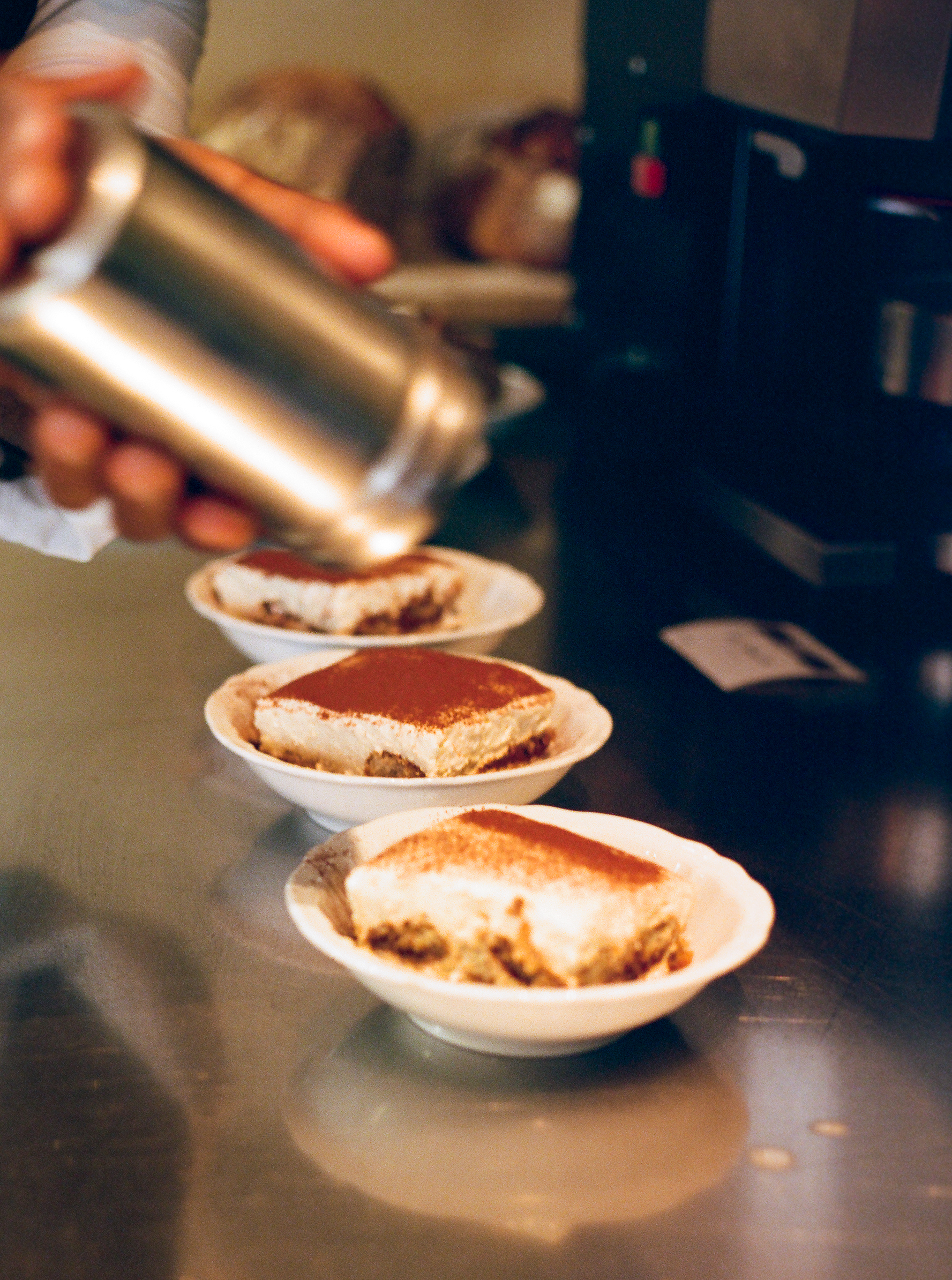
Tiramisù, perhaps Italy’s most famous dessert export, doesn’t resemble a body part—there’s no cherry nipple or almonded rear in sight—but it has sexual connotations nonetheless. The name literally means “pick me up”—and while its exact origins are debated, one widely told story traces it back to a 19th-century brothel in Treviso. According to legend, the siora (madam) invented the dish to serve her clients at the end of the night. The coffee-soaked ladyfingers, layered with an eggy mascarpone cream and dusted with cacao powder, were meant to “reinvigorate” them before they returned home to their wives and conjugal responsibilities—a sort of natural Viagra.
Almost two hundred years later, these desserts have lost most of their innuendo. Tiramisù is a given on menus from north to south—known more for weighing down stomachs than lifting up anything else—and cannoli line pastry cases not just in Palermo, but in Boston, New York, and wherever Italians have settled.
Though they may seem lighthearted, let’s not forget these sweets carry centuries of meaning, from fertility and festivity to submission and subversion. They’ve outlasted empires, outlived dogma, and still land, sugar-dusted, on plates both paper and porcelain.
So, the next time the sheer deliciousness of a cannoli or a Minne di Sant’Agata makes your eyes roll into the back of your head, know this: the sisters would understand. Ecstasy, after all, can be both spiritual and physical.
